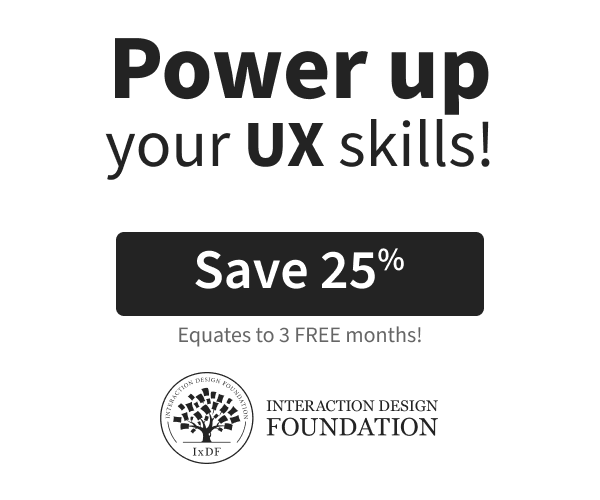

Golden Krishna teaches us that it’s possible to reduce our amount of screen time and still solve people’s problems elegantly in the background. He enlightens us to how much we’re all drowning in screens. He also shares with us that our stuff isn’t good enough, and it never will be because as designers we’re always striving to make things better.

-
Buy the Book
Buy Golden Krishna’s game-changing book through my Amazon affiliate link, and help User Defenders at no additional cost to you. Win/win!
Golden Krishna is a deeply thoughtful design innovator. Even though his website introduces him with the humble title of “UX Designer”, he’s the visionary superhero creating a powerful ripple effect in the UX world through his pioneering of the “No UI” movement starting with his popular essay that turned into his essential-reading book, “The Best Interface is No Interface“. In his work at Samsung, he’s been a part of the creation of products that the market has not even defined yet. He’s also worked at Cooper solving big UX problems for Fortune 50 companies.
LINKS
Golden’s Website
Golden’s Twitter
[BOOK] The Best Interface Is No Interface
[VIDEO] SXSW Talk
SUBSCRIBE TO AUTOMATICALLY RECEIVE NEW EPISODES
Apple Podcasts | Spotify | Pandora | Amazon Music | RSS Feed
USE YOUR SUPERPOWER OF SUPPORT
Here’s your chance to use your superpower of support. Don’t rely on telepathy alone! If you’re enjoying the show, would you take two minutes and leave a rating and review on Apple Podcasts? I’d also be willing to remove my cloak of invisibility from your inbox if you’d subscribe to the newsletter for superguest announcements and more, occasionally.
SUPER-CRED
Artwork by Cesar Lemus | Editing by Chris Combs | Music by Wyman Gentry
THEME
So much of what I’m inspired by is a result of just looking around and seeing what’s going on around me. We’re sort of drowning in screens. In the U.S. children under the age of eight look at screens for about two hours a day. Teenagers who are mostly in school look at screens for about 7.5 hours a day. Adults look at screens about 8.5 hours a day. Those number are really high. This is sort of our output. One of our outputs is this cultural effect. We’re trying to get people addicted to their experiences. When we’re trying to manipulate people to do that, we’re having this large effect on the world and we’re not actually solving things in the most elegant ways possible. There’s so much of what we make in technology that tried to get people to use it more. We can greatly reduce the amount of screen time that’s necessary in people’s lives.
DESIGN SUPERPOWER
Time travel. I have a vision for the future and strong belief about where we should probably be going. My superpower is wanting to be in a place we’re not, and trying to get us there.
FUTURE OF UX
For the past few decades, designers have been trapped by screens. I think it’s actually gotten worse in the last decade. Because entire companies that are looking for innovation or new experience have been trapped by six trademarked words…“There’s an app for that.” We’ve been trapped in this screen-based thinking and as an industry we’ve been trying to solve everyone’s problems by creating an app. By trying to solve the problems on a screen. We’ve been wondering things like, ‘’How can we solve early onset diabetes by using a form field?” Good experience design goes far beyond screens. We’ve been trapped into this thinking that it’s our only output, our only sort of medium. On that front end the thing that we generally think of, the menus, the icons, the pointer, the tap areas, on that front end we’ve been doing roughly the same output since 1978 where they first made those GUI’s at Xerox. On the backend, the processors, the stuff we don’t really see have gotten incredibly fast. The sensors and radios have gotten cheaper and embedded into all of our pockets. Now we have these incredibly fast internet connections almost everywhere we go. Yet, we’re making the same experiences on the front end. We’re even doing it in ways today to get people addicted to those experiences where designers are evaluated by how many clicks they generated, by how many page views, but not by how quickly they can get it done. Not by building loyalty by making a product or service that people actually love. And that’s of course what I’m writing about in my book, “The Best Interface Is No Interface”. But, I think we have to be cognizant about what we’re creating and how we can sort of embrace technology and take it to a new direction. We’re going to see UX shift away from thinking only in a screen. We’re going to move in a different direction, I hope we move in a direction where the screen is just one part of it and it’s considered a burden, a last resort, not necessarily the best possible solution. Screens aren’t going to go away, digital interfaces aren’t going to disappear in our lifetime. But I think we can do a lot where the future of UX and the way we practice is to create these experiences that reduce the amount of screen time that try to solve a lot of problems using that incredible progress we’ve made in that backend.
BEST ADVICE
Your stuff isn’t good enough, and it never will be. I say that as sort of a punch, sort of a joke. But as designers, I think we’re always striving to make things better. It’s never going to be good enough. I think in the workplace it’s about prioritizing. These are the things I’m gonna go after. I could try to tackle 100% of this and make every moment of this perfect, but it’s never going to be perfect. Instead, I can try to tackle one or two things, go after those major moments of the experience and try to tackle that stuff. If you look at something when it gets out the door. I think I’m usually often proud of personally I got it done in this amount of time and I got these things done. But whenever I look back at the work, I always think, “I could’ve made this thing better. But I’m proud about what I got done given the situation and you should take pride in your work so that you have confidence to move onto your next project and you’re growing and developing and that’s important. You should always be trying to push yourself forward. This isn’t perfect and it’s never really going to be, but as long as you’re pushing it forward, that’s what you should be doing.

